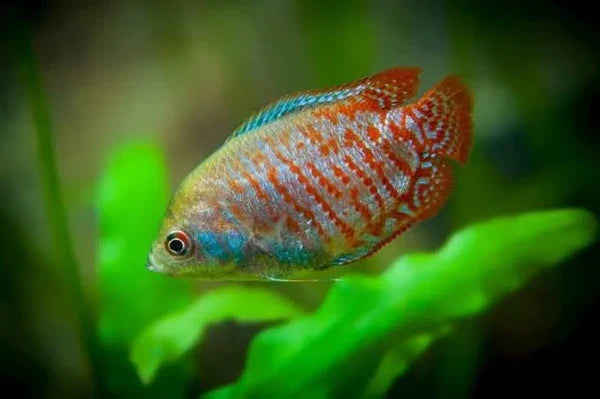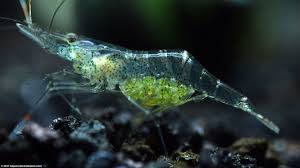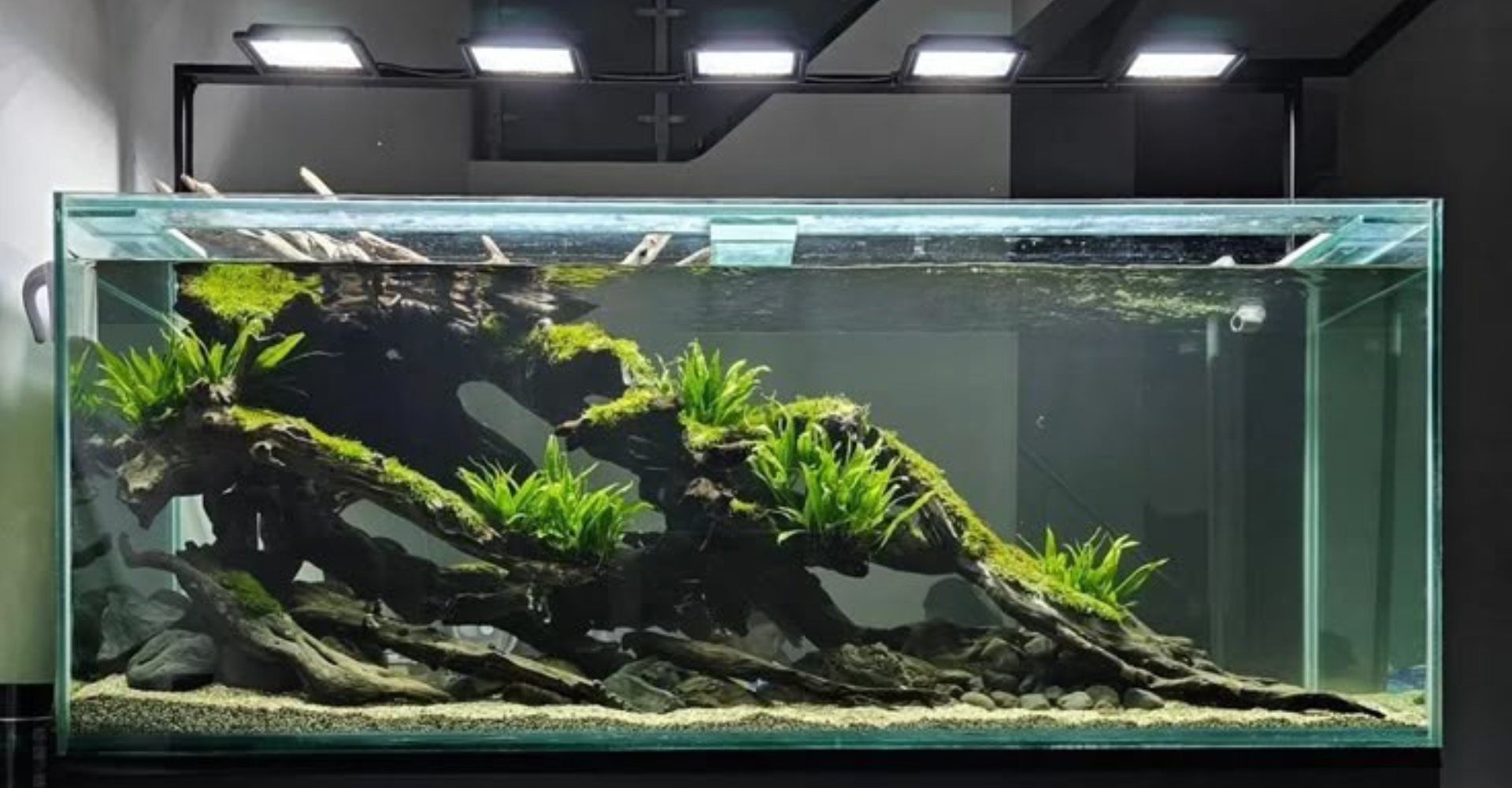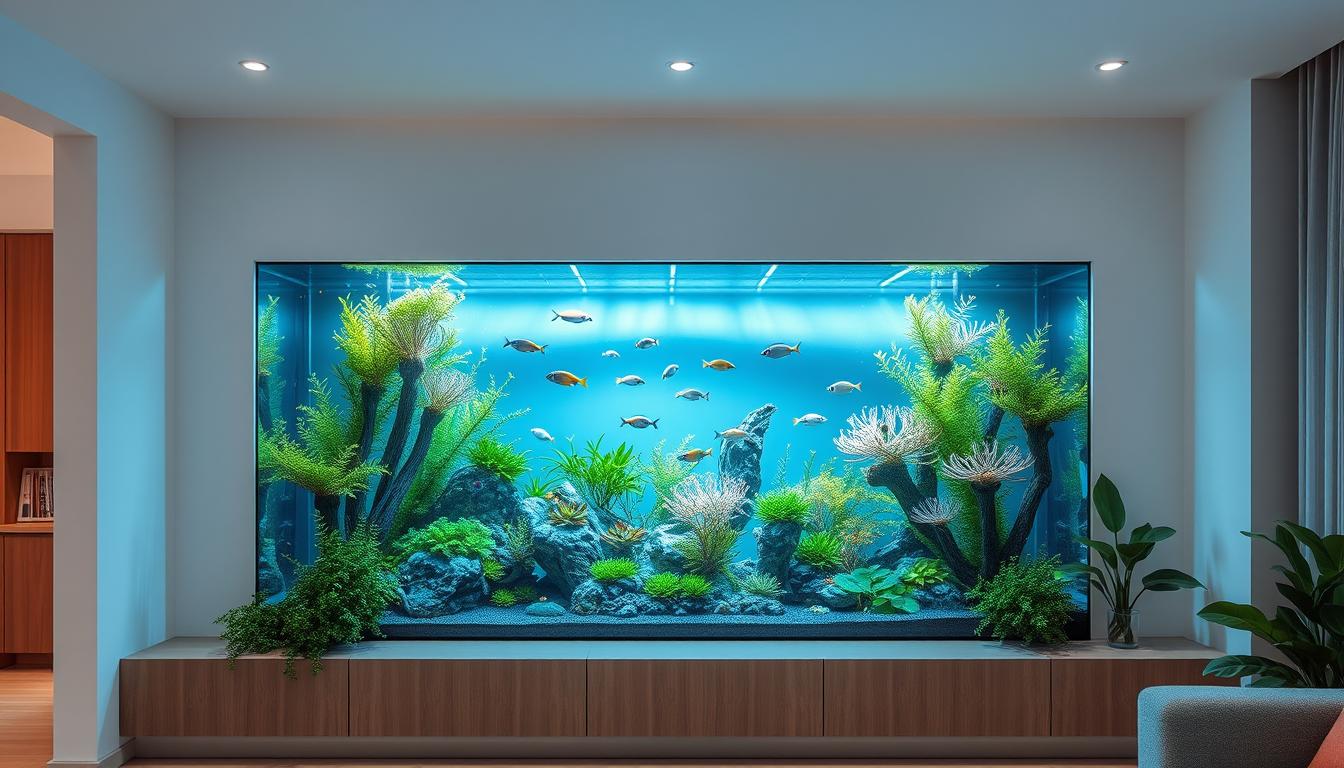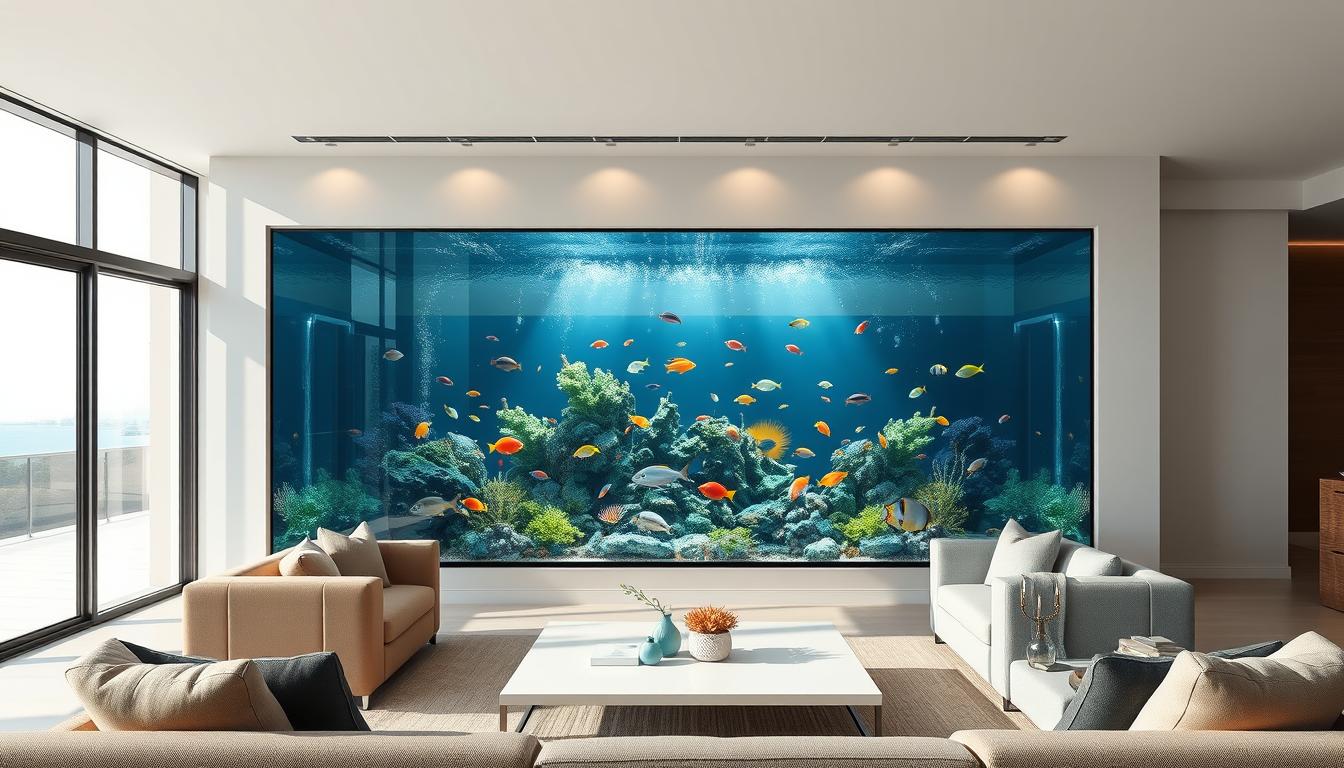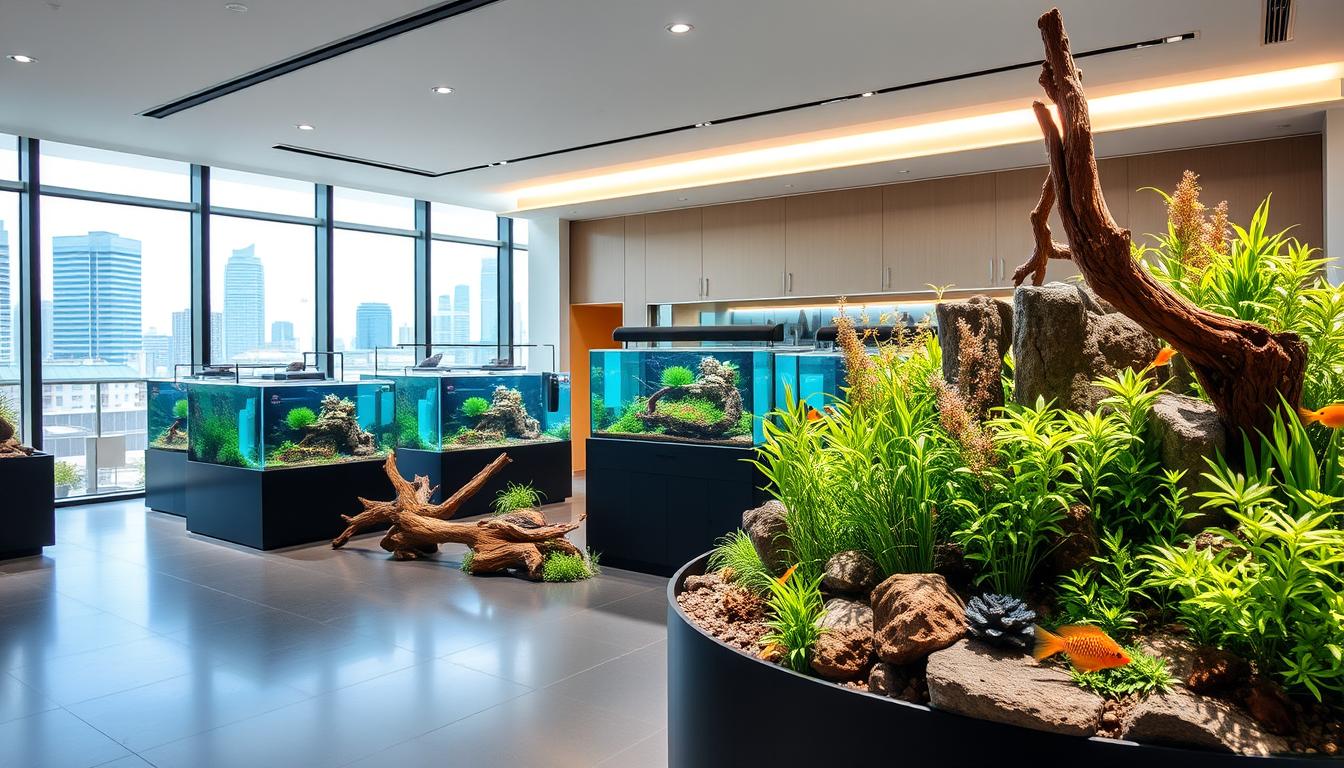How to Grow and Care for Duckweed in Your Aquarium Tank.
The duckweed is commonly found in brackish waters with slow or stagnant flows, making it ideal for aquariums. These plants grow best in tropical places with mild weather.
The leaves of the duckweed plant float on the surface of the water, bright green above and dark green or purple on the underside. Leaves are oval and flat. The roots are white or yellow-white, growing below the water's surface.
There are three different types of duckweed: Spirodela, Lemna and Wolffia.
- Spirodela is the largest species and can grow up to 5 mm long.
- Lemna is the most common variety and grows up to 3 mm long.
- Wolffia is the shortest species and is only 1 mm long.
The duckweed is the smallest flowering plant — its flowers can only be seen through a microscope.

Benefits of duckweed in an aquarium
Duckweed is very easy to propagate and beautify the aquarium. The plant produces oxygen in the water, making it easier for fish to breathe. It naturally filters the water by absorbing nitrogen and phosphorus through its roots. Water hyacinth leaves block light from entering the aquarium, preventing excessive algae growth. These plants are also edible for fish, containing 40% protein, 25% fibre and 5% fat.
Aquarium fish compatibility
Aquarium fish that will significantly benefit from duckweed are:
- goldfish
- Guppies
- betta fish
- Corydoras
- Cichlid
- Plecos



When combining other aquatic plants with duckweed, use plants that require low light, as duckweed reduces the amount of light entering the aquarium. Plants that blend well with duckweed include:
Requires tank of duckweed.
Aquariums are ideal for breeding duckweed as the plants require little or no movement. The duckweed is easy to grow because it requires very little light, requires no substrate, and produces efficiently in an inch of water.
Place the aquarium in a place with natural light. Duckweed can be found in calm, brackish water with very little light in its natural habitat. The duckweed does not require much space and can grow even in small aquariums.
Tank conditions.
The duckweed does not require strict tank conditions. The plant easily survives in most aquatic environments, provided the water flow is kept low.
Water hardness does not affect duckweed. Since these species are phytoplankton, they do not need any substrate. The duckweed must be exposed to a light source for at least six hours daily. Either natural light or full-spectrum LED lighting can be used.
These are the ideal tank conditions for growing duckweed:
- Water type: Freshwater
- Tank Size: Minimum 2 gallons
- Water temperature: 60–90°F
- Substrate: Not required
- Location of the tank: It is best to place it near a natural light source
- Acidity: 6.5–7.5 pH
- Water hardness: Any
- Light type & intensity: natural or full spectrum LED
- Hours of Light: At least six hours a day
Duckweed has few tank requirements compared to other aquatic plants. The most essential requirement is to keep water movement low.
Set up tanks & arrange aquariums.
The duckweed leaves float on top of the water while the roots float below, adding colour and beauty to the tank's surface. These plants need constant pruning as they spread quickly and will begin to cover the entire top of the aquarium. This spread will block light from fish and other plants.
The duckweed should be isolated in a separate tank or container unless the plant comes from a well-controlled environment, such as a laboratory. Quarantine and disinfection are necessary to ensure the duckweed is free of contaminants and parasites that can harm aquarium fish.

Light.
Full sun is required for best duckweed growth, but the plant will tolerate low to high light and soft or hard water. Place the aquarium in a warm, sunny spot where it receives at least six hours of sunlight daily. Full spectrum lighting and the addition of trace minerals during water changes will encourage the growth of denser duckweed.
Water.
Common duckweed multiplies, floating on calm water. Keep the water level with little or no flow; If the water moves too much, the plant will not grow as quickly.
Check the pH with a pH meter. It should have a neutral pH between 6.0 and 8.0, preferably just over 7. If desired, plant separately in rectangular containers at least 5 inches deep, 18 inches long and 12 inches wide.
Fertilizer.
Add a 10-10-10 balanced liquid fertilizer that contains iron, which you can find at your pet store. Dilute the fertiliser with four to five times the usual amount of water.
Temperature.
Common duckweed is easy to adapt to the temperature. For best results, maintain the temperature between 63℉ and 79℉.
Instructions for care & cultivation.
Duckweed is one of the easiest aquatic plants to propagate because it requires almost no special care. The plant will grow in nearly any water condition.
Nutrition.
Duckweed does not need particular nutrients or chemicals to grow. The plant only needs about six hours of sunlight a day.
Maintenance.
The duckweed is a hardy plant that rarely gets sick. The plant's most important maintenance requirement is to consistently monitor and prune the growth to ensure it doesn't cover the entire surface of the aquarium or clog the water filter.
Prune the plant using an aquarium net to scoop and remove parts of the plant whenever overgrowth is detected.
The growth of duckweed.
The duckweed reproduces asexually, which means the plant relies on buds attached to its leaves to produce. When these leaves fully mature, they separate from the parent plant and grow when they touch the water.
If you grow duckweed in an aquarium, cover the aquarium with dark paper and fill the tank with water. Install an air stone and pump to help oxygen circulate. If you are using tap water, leave the water overnight to allow the chlorine to evaporate before adding the duckweed. Make sure to disinfect the plants before placing them in the aquarium.
Regular duckweed pruning.
Because duckweed multiplies, complete control of its invasive ability is not possible. It would be best to take precautions before the spread becomes a nuisance.
Although the widespread nature of duckweed is considered invasive, many gardeners will agree that the benefits outweigh the maintenance. This nutritious plant keeps many organisms fed while removing pollutants from the water, making it the ideal specimen for any aquarium or pond.
The duckweed is easy to grow and care for, making it an ideal aquatic plant for beginners. Adding these plants to the aquarium is very beneficial as they act as a natural water purifier and are also a great source of nutrients for the fish. The duckweed can also help maintain the cleanliness of the aquarium by blocking light and preventing algae growth.


